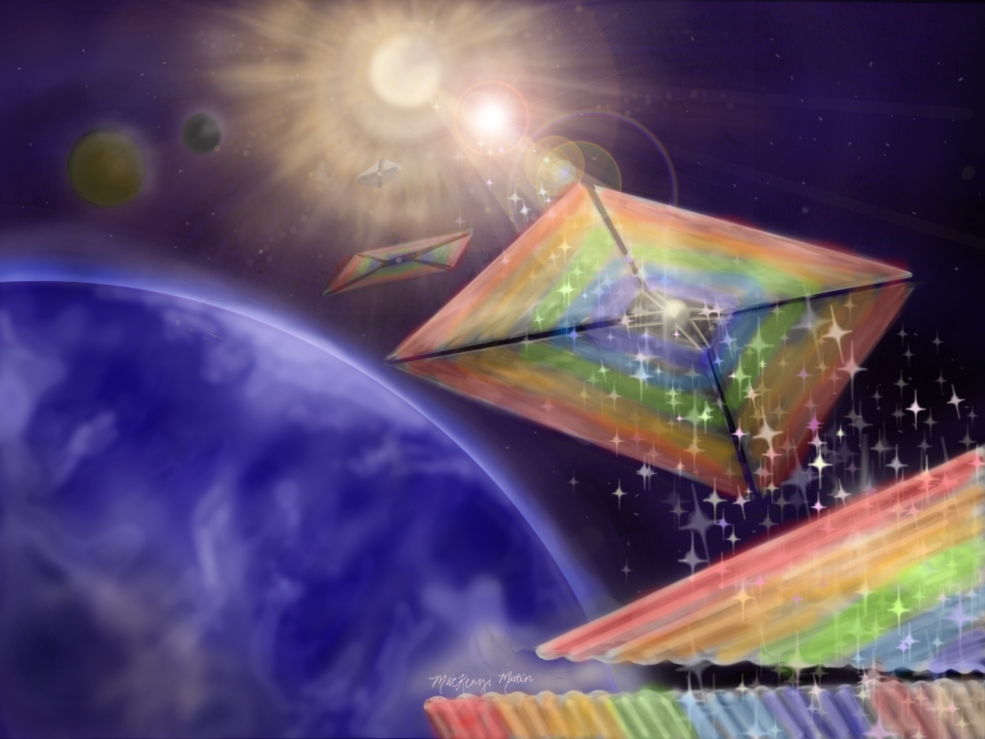Sails have propelled earthlings across the seas for millennia, but NASA believes their future is off-world.
The space agency has unveiled plans to develop a new solar sail system for a demonstration mission.
Dubbed Diffractive Solar Sailing, the project won Phase III of the NASA Innovative Advanced Concepts (NIAC) program, which supports visionary space technologies.
Those picked for Phase III are the closest to becoming real — so a spacecraft powered by solar sails isn’t a quixotic prospect.
Indeed, variations of the technique have already reaped results.
In 2010, a Japanese probe called Ikaros became the first craft to successfully use the tech in space. NASA later unfurled a solar sail of its own while orbiting Earth.
Yet the space agency says the new proposal has a special power: diffraction.


The Diffractive Solar Sailing system uses pressure from the sunlight to propel spaceships.
The sails use tiny grates to harness diffraction, which makes light spread out when it passes through an opening. As a result, spacecraft can maximize the available sunlight power.
While existing solar sails force tradeoffs between power and navigation, the concept amplifies propulsion without sacrificing maneuverability.
NASA envisions the technique sending spacecraft to explore the sun’s poles — a mission that’s impossible with the tech of today.
“With our team’s combined expertise in optics, aerospace, traditional solar sailing, and metamaterials, we hope to allow scientists to see the Sun as never before,” said project lead Amber Dubill.
That’s the idea, anyway. NASA has now given the researchers $2 million to make it a reality.

